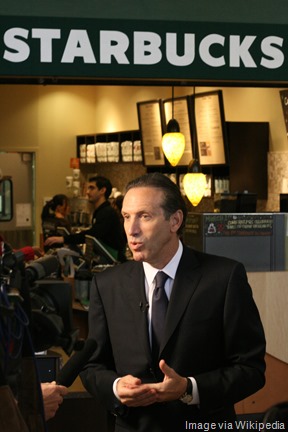Every business leader I know struggles with the challenges of leadership, and is constantly honing their formula for success. We all wish it could be boiled down to a short list of actions, but we continue to be surprised and frustrated by new situations that seem to be beyond our thinking. Thus, ever after years as an executive in IBM and other companies, I’m still looking for the magic.
I was impressed by a recent book, “The Leadership Star,” by Brian Hartzer, an experienced business executive, offering a concise leadership framework that I believe embodies the key attributes that I recommend. I challenge each of you to review his list for completeness, as paraphrased here, and take a lesson or two from it to improve your own leadership impact:
-
Show genuine care as the foundation of engagement. Great leaders strive to treat each person in their organization as a valued individual, rather than as a “human resource.” That means showing that they value each person for who they are, take interest in their development and growth, and care about excellence and results.
This focus on individuals, often called servant leadership, is building a larger and larger following. Howard Schultz, former chief executive of Starbucks, credits servant leadership with driving his company to scale so quickly to now almost 34,000 stores in 80 countries.
-
Help constituents find meaning in what they do. Strong leaders define and explain the organization’s purpose (why), priorities in delivering on that purpose, and demonstrate their own personal commitment to each. They help people see how their individual roles link to and support that purpose, and how the work aligns with their own personal values.
Of course, finding personal meaning also requires effort on the part of your employees. They must recognize and appreciate what they are good at, realize what makes them happy, follow their passion for adding value to the world, and contemplate their legacy.
-
Ensure team members know what is expected of them. Leaders need to give clarity to individual roles, expected behaviors, goals, and consequences, through regular formal and informal feedback. Ideally that feedback allows you to understand both absolute performance against goals, and your relative performance in the broader organization.
In my consulting as well as leadership roles, the gap I found between what a leader expected versus what team members heard amazed me. I found that I needed to deliver the same message, in different forms, several times before it was really aligned.
-
Be proactive in helping knock down progress barriers. This means really listening to team members and asking what’s getting in the way, personally looking for barriers they may not see or recognize, and taking action to remove those barriers. You must take the initiative to talk to customers, suppliers, other employees, and understand the process.
The key here is to adopt a “proactive personality.” Many business leaders tend to become more and more reactive, as the volume of issues and challenges grows as your business scales or struggles. Keep your focus on the future, and what you can control.
-
Publicly recognize individual contributions and success. The most effective leaders create a culture that regularly recognizes the value of individual day-to-day efforts, and celebrates major milestones, such as the achievement of quarterly or annual results. They utilize a variety of peer and team-leader programs, both formal and informal.
Studies show that public peer recognition programs are often more effective than big bonuses or cash rewards. If you provide recognition for the right behaviors consistently, the desired results will accrue, and team members will be advocates for your leadership.
In all of these elements, the character and behavior of you as a leader is critical. You must demonstrate strong personal values and purpose, empathy for others, sustainable energy, and self-awareness. As well, you must continuously communicate through multiple channels, such as walking-the-talk, email, and town hall meetings. Keep listening and adjusting based on feedback.
Even with all this, I have learned that good business leadership is a journey, not a destination. You have to be willing to learn from your mistakes, humble enough seek help and advice regularly from peers, mentors, and coaches, and smart enough to recognize good people are the key asset of every organization, even more important than good processes.
Most important of all, you must seek to enjoy the journey, if you hope to enjoy the success.
Marty Zwilling
*** First published on Inc.com on 1/07/2022 ***
Source: Startup Professionals










